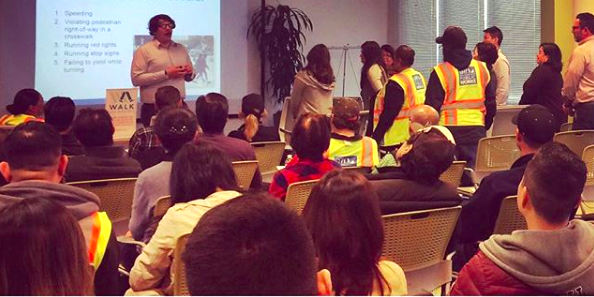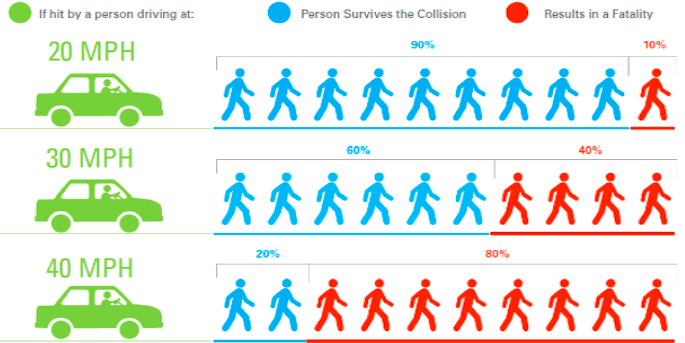SF Department of Public Works commits every employee to Vision Zero
Last year, 20 people were killed in traffic crashes in San Francisco, and hundreds more were injured. That’s why the City has a Vision Zero goal to eliminate all serious and fatal crashes by 2024.
 Now, thanks to Director Mohammed Nuru making it a priority, all 1,200 members of the Department of Public Works are also taking a Vision Zero workshop, taught by Brian Haagsman of Walk San Francisco, to fully understand what Vision Zero is, why it matters, and how it works.
Now, thanks to Director Mohammed Nuru making it a priority, all 1,200 members of the Department of Public Works are also taking a Vision Zero workshop, taught by Brian Haagsman of Walk San Francisco, to fully understand what Vision Zero is, why it matters, and how it works.
Designing streets for Vision Zero
The San Francisco Department of Public Works was one of the first departments to make a commitment to Vision Zero. That’s important, because Public Works is one of the main city agencies changing street design.
Public Works partners with the SFMTA (Municipal Transportation Agency) to install specific Vision Zero safety fixes and has pledged to include pedestrian safety improvements whenever streets are repaved.
Perhaps the most important thing to learn for everyone who takes the training is this: Speed kills.
In our workshops, Public Works staff learn that vehicle speed is a triple threat. As speed increases, a driver’s field of vision narrows; stopping distance increases exponentially; and the risk of serious injury or death also rises exponentially. We also discuss tools to make speeds safer, which Public Works designs, builds, and maintains. These include bulb-outs, road diets, raised crosswalks, chicanes, and more.
 A new understanding
A new understanding
The staffers’ roles vary: some drive street sweepers, some plan the landscape architecture, and some install curb ramps. But everyone comes away understanding that when streets are designed for safety rather than speed, no one has to pay for a mistake with their life.
We talk about the people we’ve lost, like 90-year-old David Grinberg, who crossed Fell Street every day to read in the Panhandle—until the day last fall when, trying to get across four lanes before the light changed, he was hit and killed.
After hearing that story, one Public Works employee said, “I no longer believe these ‘accidents’ are inevitable…one fatality or serious injury is one too many.”
As they repave over 1,400 city blocks, make improvements to 125,000 square feet of sidewalk, and implement dozens of major streetscape projects across the city, Public Works employees will now do so with a deeper connection to Vision Zero.
And that’s good news for everyone who uses San Francisco streets.

